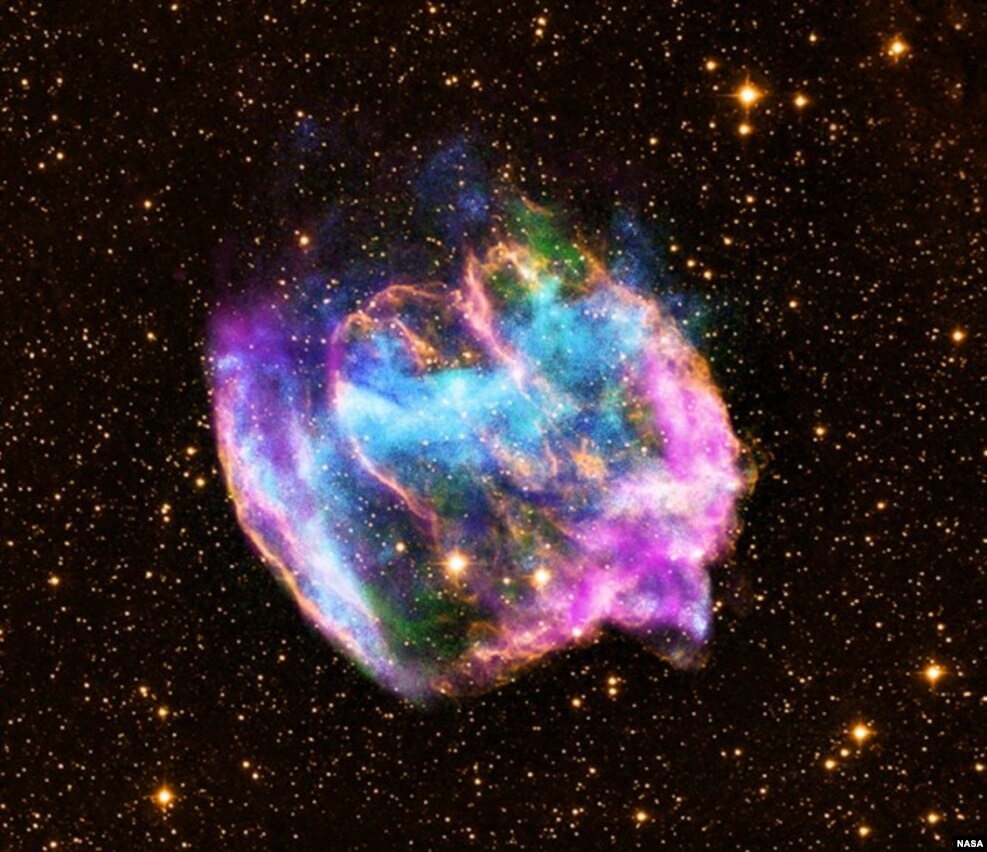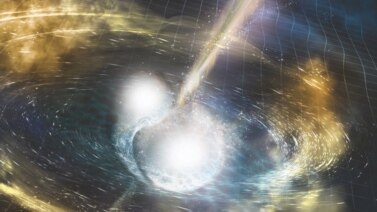
Scientists have long believed that a star explodes when it reaches the end of its life.
This explosion is called a supernova. NASA, the American space agency, describes a supernova as the largest explosion that takes place in space.
Recently, a team of astronomers discovered evidence of one star that apparently refuses to die.
The long life of this supernova is raising questions for experts who thought they knew how dying stars worked.
The star, officially called iPTF14hls, is 500 million light-years away from Earth. One light-year equals 9.5 trillion kilometers.
It was found in 2014 and appeared to be a normal supernova, growing less bright over time.
But a few months later, astronomers at the Las Cumbres Observatory saw it getting brighter. In fact, they have seen the light grow brighter, then weaker, then stronger again five different times. They also found evidence of an explosion in the same area 60 years ago.
The findings were reported in the journal Nature.
The observatory is based in the American state of California. The astronomers say they continue to keep watch of the star with robotic telescopes around the world.
Supernovas normally grow dark after about 100 days. But this one is still going strong after 1,000 days, although it is slowly getting darker.
“It’s very surprising and very exciting,” said Iair Arcavi, who is with the Physics Department at the University of California, Santa Barbara.
Arcavi led the team of astronomers. He said “We thought we’ve seen everything there is to see in supernova after seeing so many of them, but you always get surprised by the universe. This one just really blew away everything we thought we understood about them.”
This supernova is believed to have once been a star up to 100 times larger than our sun. It is possibly the biggest explosion of a star ever observed. The Associated Press says this might explain its unusual ability to survive.
Alive and rare
One theory is that the supernova is actually several explosions happening so quickly that they run into one another. It could also be a single explosion that repeatedly gets brighter and darker.
Another idea is that this star was so large, and its core or middle so hot, that an explosion only blew away the star’s outer layers. This would mean the star’s core was left solid enough to repeat the entire process. However, this theory still does not explain everything about this supernova, Arcavi said.
Avi Loeb is chairman of the Astronomy Department at Harvard University in Massachusetts. Loeb was not involved in the study. But he thinks the star’s core might be either a black hole or a magnetar. A magnetar is a neutron star with a strong magnetic field. However, there will need to be further study in order to better explain what is happening, Loeb said.
Scientists also do not know if this unusual supernova is one of a kind. For now, it appears to be rare since no others have been identified.
“We could actually have missed plenty of them because it kind of masquerades as a normal supernova if you only look at it once,” Arcavi said.
However one thing that everyone agrees on is that nothing lasts forever, not even this super supernova.
“Eventually, this star will go out at some point,” Arcavi said. “I mean, energy has to run out eventually.”
I’m Phil Dierking.
Marcia Dunn reported this story for AP. Phil Dierking adapted her report for VOA Learning English. George Grow was the editor.
Have you ever seen a one-of-a-kind event? We want to hear from you. Write to us in the Comments Section or on our Facebook page.
Words in This Story
masquerade - v. to pretend to be someone or something else
neutron - n. a very small particle of matter that has no electrical charge and is part of the nucleus of all atoms except hydrogen atom
speculate - v. to think about something and make guesses about it
super - n. extremely good
layer - n. an amount of something that is spread over an area
